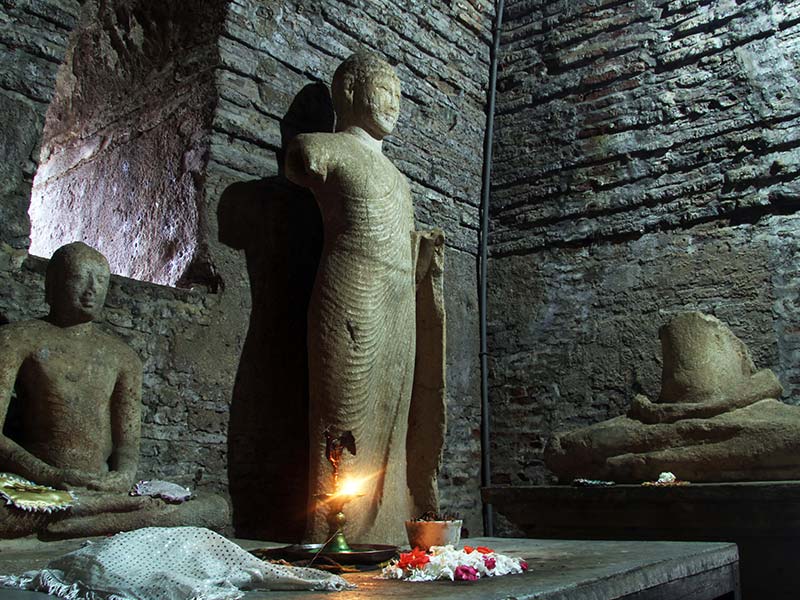The Thuparama Image House in Polonnaruwa should be never confused with the original Thuparama stupa and monastery in old Anuradhapura. In fact, there is hardly any comparison between them, especially with the wonderfully solid and highly resistant structure of the former building. It is one of three image houses, including Tivanka and Lankathilaka. This elaborately carved brick and stone building with its vaulted and arched door and the other two great image houses of Polonnaruwa stand out as artistic and architectural wonders, with no actual equivalent anywhere else in terms of conception and execution of these structures and in the ornate carvings that seem to almost pop out of the walls in their intricacy.
The outer walls near the entrance of the Thuparama Image House are dotted with sharply incised details in the side and front views of palaces and other important buildings with domed or vaulted roofs and intricately carved pillar capitals. When in its prime it would have been brightly colored and wonderfully maintained and indeed it has changed very little over the centuries.
The same goes for the interior of the building, which might have been far more beautiful than what we see today. The roof of the Thuparama Image House was made of brick, not tile or wood, and we also see the actual images, still in a wonderful state of preservation. They are Buddha statues, unremarkable in size, but beautifully white, looking like bright beacons in the dark interior space. The ancient name of the place is unknown, and it is difficult to ascertain who sponsored its construction. However, it is thought to have been built during Parakramabahu’s reign, under the sponsorship of a minister named Mahinda. According to others, it was built during the reign of the previous King Vijayabahu, founder of the Polonnaruwa Kingdom. The entrance to the image house contains a doorway with a rounded top, as well as the ubiquitous moonstones and guardian stones, as well as well-carved makara balustrades.
There is also a doorway on the side of the building, and further outside is an androgynous figure of an armless Bodhisattva, standing on a small platform. When one enters the area, one sees the image house itself as the centerpiece, a massive piece of stonework rising out of an area of short grass, and next to it on its flank are the remains of a small rectangular, colonnaded building. All that remains of this particular place are its stone pillars and brick foundations. It may have been an audience hall or so; thus we see that Thuparama Image House was part of a considerable building complex.
Written by Vasika Udurawane for Travel Lanka Compass



0 Comment